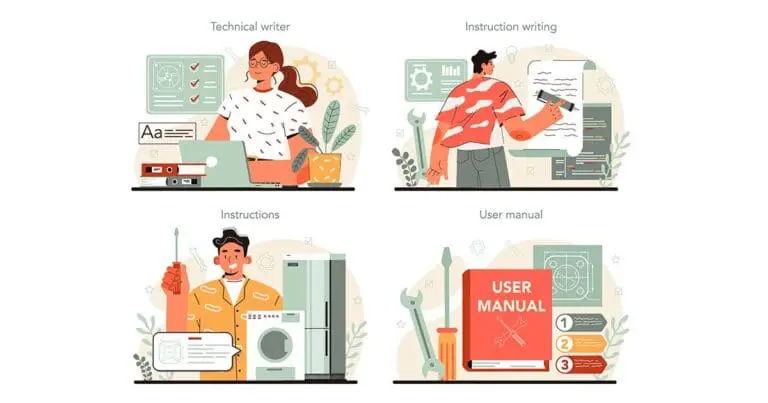What is Backfilling? Importance for Hiring Managers

Hiring managers need to hire people for various reasons.
Sometimes it’s because there is a new project that requires a skill set you don’t already have on your team; others, because the team is growing and an additional headcount is needed to keep up with the workload.
One of the trickiest situations for hiring is when you are backfilling a role on your team.
In any workplace, vacant positions can be a huge risk which is why it’s so important to quickly fill vacant positions in order to maintain business success.
What is backfilling in employment?
Backfilling is when you have to replace a departed employee on your team by hiring someone new to fill that empty position and take over their responsibilities to avoid a disruption in workflow.
Why is backfilling necessary?
- An employee may be promoted
- An employee may resign
- An employee may be fired
- An employee may go on temporary leave
Whatever the reason, when an employee leaves, it can create a big hole in your team that needs to be filled as soon as possible in order to maintain productivity and keep things running smoothly.
Reasons a hiring manager needs to backfill a position
Backfilling a resignation
A hiring manager may need to backfill a position if an employee gives notice, whether for a competing offer, to switch careers, focus on family, or medical issues.
In most cases, resignations come without warning and give hiring managers little time to find a replacement.
Backfilling a termination
Sometimes the cost of doing business means having to let an employee go for performance issues or because they didn’t have the skills for the role.
In these cases, the hiring manager usually has some idea in advance that it’s not working out with an employee, giving them a bit more time to prepare and find their replacement.
Backfilling for temporary leave
As dedicated employees hit some of life’s biggest milestones, they may decide to take temporary leave such as parental leave, sick leave, or sabbatical.
Most of the time, these absences are planned well in advance and hiring managers can plan to backfill these roles with contract or contract-to-hire employees.
Backfilling for the death of an employee
In tragic cases like these, the company and its employees are likely a bit shaken and are likely to need time to grieve.
This is why it’s more important than ever to ensure they aren’t burdened with picking up the work left behind by their departed co-worker.
Reasons to backfill a position
Backfilling roles to maintain productivity
When an employee leaves, whether it’s for another job or personal reasons, there is always a period of adjustment as the team scrambles to cover their workload.
This can lead to a decrease in productivity as employees try to pick up the slack and take on additional responsibilities.
Backfilling roles to maintain morale in the workplace
An empty position can also have a negative impact on morale in the workplace.
If an employee leaves and their position isn’t filled quickly, it can create feelings of uncertainty and anxiety among the team.
This is why it’s so important for companies to have a plan in place for how they will backfill vacant positions.
Backfilling roles to maintain the bottom line
An empty position can also have a negative impact on the bottom line.
If a company isn’t able to quickly fill a vacant position, they may have to spend money on overtime or temp workers to pick up the slack which can add up quickly and eat into profits.
Whatever the reason, when hiring managers find themselves in this position, they can become trigger shy to bring someone new on for a number of reasons.

Reasons a company may not backfill a position
Not backfilling a role because of ramp time
It can take a while to get someone up to speed on your project or team process, and by the time they are up to speed, the project deadline or deliverable will be so close that they won’t have much of an impact.
Not backfilling a role because of the learning curve
In some cases, it may make more sense to leave a position vacant until a replacement can be found who already has the skills and knowledge required for the role.
This is especially true in cases where the learning curve is steep or the position requires a high level of expertise.
Not backfilling a role because it’s not in the budget
Budgetary constraints are often cited as a reason for not backfilling vacant positions.
The previous person in the role may have already used a lot of the budget, and the project stakeholders may decide to invest that money elsewhere.
However, this can be a short-sighted approach as an empty position can end up costing the company more money in the long run.
Not backfilling a role due to training burnout
The hiring manager may feel they are burned out from training new people and think it is easier to do it themselves or have the team all share the responsibilities.
However, this can lead to a decrease in productivity and morale as employees try to pick up the slack.
Risks of not backfilling a position
Overburdening your team by not backfilling a role
When you don’t backfill a role, the responsibilities often fall on the people who are still on the team or project.
This can cause them to get overworked and stressed, and lead to burnout, which can lead to even more turnover on your team.
Risking the bottom line by not backfilling a role
The cost of not having the role filled and the function either going unfilled or poorly performed, can often have more of a financial impact than the cost of the position’s salary.
For example, if the role is in customer service and it’s not filled quickly, you may start to see a decline in customer satisfaction which can lead to a loss of business.
Damaging company culture by not backfilling a role
When people see that roles are not being filled or that the company is not valuing its employees, it can lead to a decrease in morale and motivation.
This can cause good employees to start looking for other jobs, which will only compound the turnover problem.
Working to backfill your positions
While backfilling a position can feel like an overwhelming uphill battle, it doesn’t have to be.
With the right strategies in place and by working with a reliable staffing agency like Mondo, filling roles quickly with top talent that won’t require as much ramp-up time, you can backfill the roles you need to keep your operations running smoothly.
Find great replacement talent when you partner with Mondo
Looking to hire? Contact us to get started:
Continued reading on employment industry trends for employers:
- Why Employees Quit and How to Prevent It
- Mass Layoffs in 2022: What’s Next for Employees?
- The Evolution of Work: 9 Trends That Matter
- Best Ways to Recruit & Hire Gen Z Talent
- Pay Transparency: What States Have It & Why It’s Important
- Take-Home Assignments: the Biggest Mistake for Hiring Managers



